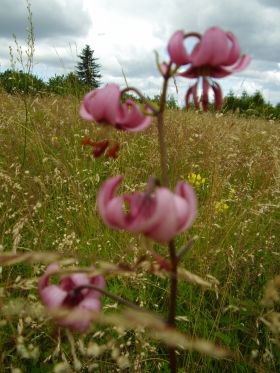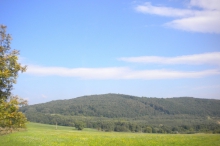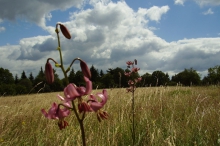Hradišťany - the second largest peak of České středohoří (Central Bohemian Uplands). Many interesting archeological finds have been made in this area. On the nearby peak of Hradišťany you will find the remains of a stronghold of the Knovíz culture dating from 8-9 BC. The mounds are made of basalt boulders. The biggest boulders were preserved on the northern side towards Mukov. In the Laten Period the stronghold was inhabited by Celtic tribes and in the early Middle Ages by Slavs.
The top plateau is formed by the remains from the extrusion of Olivinice basalt rock. The Hradišťanská Meadow nature reserve can be found here at 733-752 m above sea level. The area became protected in 1952 and before that it was a private nature reserve of Lobkowitz. The protection was set up in order to protect the typical flora of the mountain meadow, featuring an abundance of orchids. Due to various reasons - unsuitable agricultural methods, the negative impact of emissions from the nearby power plant in Ledvice etc. - several species, that were under protection, have completely disappeared and the overall number of species has been reduced. The main focus of the protection of the area has changed for the benefit of the seriously endangered Tephroseris aurantiaca, however the species has not been seen here in the last years. Attempts are under way to plant it artificially.
Other interesting plant species that can be found here: Globe-flower (Trollius altissimus), Viper's grass (Scorzonera humilis), White Cinquefoil (potentilla alba), Haterus heterophyllus and Festuca ametystina. Woods themselves are not protected. Unfortunately, the woods surrounding the protected meadow bear signs of heavy damage due to emissions, the spruce trees had to be cut down, only bits of stumps are remaining now, for example in the steep hill towards Hetov Mill; the situation is very similar to other places in the Krušné Mountains. The sight is quite depressing.
There are new deciduous trees planted which changes the composition of the wood on the top parts of Hradišťany, and it opens up the protected location in the northwest. In terms of zoology, there are no particular reasons for the protection of the area; recently the results on mollusc research in the area were published.





































